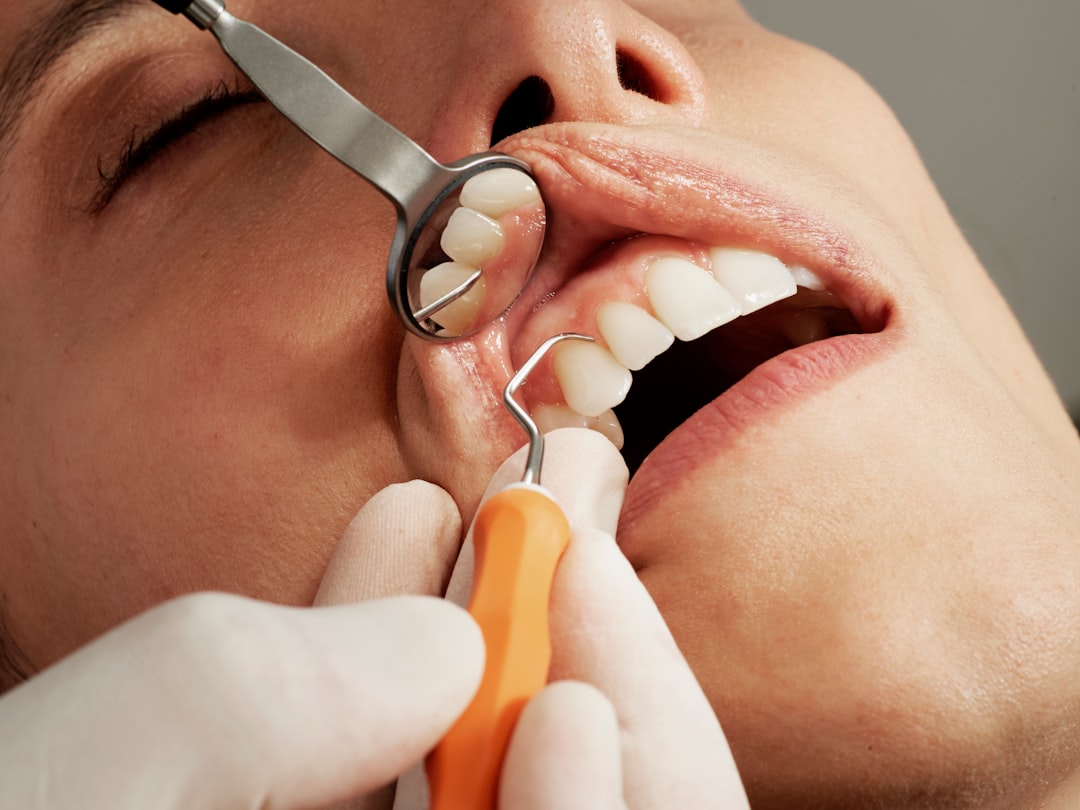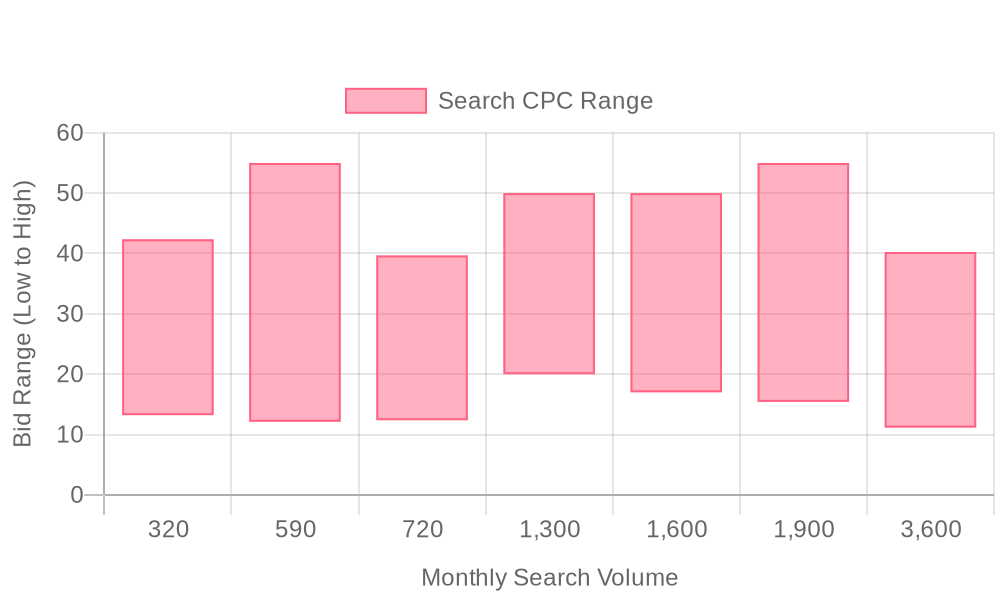
Supercharge your lead generation with a FREE Google Ads audit - no strings attached! See how you can generate more and higher quality leads
Get My Free Google Ads AuditFree consultation

No commitment
Supercharge your lead generation with a FREE Google Ads audit - no strings attached! See how you can generate more and higher quality leads
Get My Free Google Ads AuditFree consultation

No commitment
In today's complex marketing landscape, effective B2B marketing requires a strategic mix of both online and offline channels working in concert. Online channels like social media build digital brand awareness, email marketing nurtures ongoing relationships, and SEO drives organic visibility. Meanwhile, offline channels such as trade shows generate face-to-face connections, direct mail creates tangible touchpoints, and industry publications establish thought leadership. Within this integrated ecosystem, Google Ads plays a critical middle-funnel role by capturing high-intent prospects at the exact moment they're searching for solutions—effectively bridging the gap between broader awareness efforts and your sales process. For Google Ads for Dental Marketing, Google Ads represents a powerful opportunity to bridge online and offline marketing efforts:

Modern dental practices thrive on timely engagement with high-intent prospects. A data-driven Google Ads approach ensures that your campaigns reach qualified patients at critical decision points, accelerating both lead generation and patient acquisition. By using real-time audience insights, dental marketers can optimize targeting and connect with patients who are most likely to convert.
By integrating Google Ads into your broader dental marketing strategy, you unlock precise targeting, actionable data, and measurable ROI. For a comprehensive overview of how Google Ads can fuel dental practice growth, this step-by-step guide for dentists is a helpful starting point. For more advanced strategies, explore our in-depth marketing playbooks designed to drive scalable pipeline growth.
Delayed or manual follow-ups can erode the value of even the best Google Ads campaigns, as hot dental leads cool quickly without prompt engagement. With intent-based audience segmentation and CRM-ad sync, marketers ensure that interested patients see high-priority ads and receive immediate outreach, preventing pipeline leaks and improving speed-to-sale. To experience these capabilities firsthand, get started for free with Sona.

Dental marketing demands precision and speed to capture patients at the exact moment they seek care. Google Ads meets this challenge by connecting dental practices with individuals who are actively searching for treatments, from routine cleanings to urgent dental emergencies. For a step-by-step guide to setting up and optimizing campaigns, see Google Ads for dentists.
Understanding exactly which organizations or individuals are engaging with your campaigns enables smarter budget allocation and campaign refinement. When every ad dollar is connected to real patient outcomes and business growth, Google Ads becomes a critical component of a data-driven dental marketing strategy. To experience the benefits first-hand, get started for free with Sona.

Incomplete or outdated account data often hinders personalization and targeting across these campaign types. When audience and lead lists are continuously enriched and synchronized across Google Ads, marketing automation, and CRM, dental practices reach the right prospects at every stage without manual intervention, maximizing both efficiency and patient acquisition outcomes. To streamline your dental marketing campaigns and connect with more qualified patients, get started for free with Sona.

Expanding your dental marketing reach requires moving beyond traditional channels that primarily attract existing audiences. For dental practices aiming to accelerate patient acquisition and maximize Google Ads performance, identifying new growth pockets means tapping into overlooked specialty services and emerging patient behaviors. For a look at how Google Ads can drive measurable ROI for dental offices, explore this guide to Google Ads effectiveness in 2024. Marketers can also gain ongoing insights from Sona’s blog for advanced strategies in healthcare and dental marketing.
Ensuring that all channels deliver a consistent, unified message is critical for dental practices looking to build trust, reinforce brand authority, and drive higher ROI from their Google Ads and online dental marketing campaigns. By syncing audiences and engagement data across platforms, every touchpoint reinforces the same value propositions and patient experience, maximizing both engagement and ad spend efficiency. Practices ready to unlock these strategies can get started for free with Sona to streamline their audience targeting and measurement.

Audience segmentation is the foundation of high-impact dental marketing, transforming broad targeting into focused outreach that addresses the specific needs of each patient type. By dividing your audience based on service interest and patient intent, you unlock the potential for more relevant messaging and stronger conversion rates throughout your Google Ads for Dental Marketing strategy.
Connecting sales and marketing data across platforms ensures a cohesive campaign environment. This approach supports strategic engagement and maximizes conversion efficiency, as revenue teams gain a unified view of the full patient journey—empowering them to engage the right audiences with the right message at the right time. If you’re ready to streamline your segmentation and targeting, get started for free with Sona.

| Industry | Keyword | Monthly Search Volume | Competition Level | Low Bid | High Bid |
| Dental Marketing | dental implant marketing | 320 | LOW | 13.21 | 42.35 |
| Dental Marketing | marketing for dental offices | 590 | LOW | 12.12 | 55 |
| Dental Marketing | dental marketing agency | 720 | LOW | 12.38 | 39.67 |
| Dental Marketing | dental seo company | 1300 | LOW | 20 | 50 |
| Dental Marketing | dental seo | 1600 | LOW | 17 | 50 |
| Dental Marketing | dental marketing companies | 1900 | LOW | 15.41 | 55 |
| Dental Marketing | dental marketing | 3600 | LOW | 11.15 | 40.25 |
Modern dental practices can accelerate patient acquisition by deploying a tightly focused keyword strategy that aligns with the urgent needs of their audience. Leveraging Google Ads for Dental Marketing, practices connect with prospects who are actively searching for dental solutions, capturing high-value leads at the moment of intent. For additional strategies on digital marketing and analytics, explore the Sona blog.
Precision targeting is essential for intercepting decision-makers as they evaluate dental providers and specific treatments. By analyzing which companies and individuals engage with core website pages—like service overviews or pricing—a practice can refine its keyword lists around high-conversion intent, such as "emergency dentist near me," "Invisalign specialist," or "same-day crowns." This approach ensures ad budgets are allocated where the probability of conversion is highest, reducing wasted spend and increasing the quality of incoming leads.
Practices benefit from measurable ROI by tracking every stage of the patient journey, from initial click to appointment and ultimately to treatment completion. With advanced attribution capabilities, revenue teams can see which keywords, ads, and audience segments deliver actual bookings. The ability to track both online and offline conversions provides a comprehensive view of real campaign impact, making it easier to justify investments and forecast future performance.
Channel synergy amplifies reach by enabling retargeting across display, video, and social platforms. Once a visitor has engaged with high-value content, audiences can be dynamically updated as those leads move through the funnel, ensuring messaging remains relevant and personalized. Real-time behavioral signals help marketers shift budget to accounts showing in-market activity, capturing demand before competitors act.
By integrating CRM and ad platforms, practices can seamlessly sync enriched lead data and audience segments into Google Ads campaigns. This closed-loop approach ensures that each marketing dollar is working to engage prospects who are most likely to convert, supporting both immediate patient acquisition and long-term dental practice growth. If you're ready to enhance your campaign performance, get started for free with Sona.
A systematic execution framework is crucial for maximizing the performance of Google Ads for Dental Marketing. Dental practices that follow a disciplined approach to campaign setup, creative development, and continuous optimization consistently outperform those relying on ad hoc tactics. By integrating data across channels and leveraging advanced intent signals, practices can attract higher-value patients and achieve measurable business growth. For deeper insights into effective campaign strategies, explore best practices and tips for dentists to succeed with Google Ads.
Effective dental PPC campaigns begin with rigorous keyword clustering. Each cluster targets a specific service line such as dental implants, routine checkups, or cosmetic procedures. Localizing keywords with city, neighborhood, and "near me" modifiers ensures ads reach patients actively searching for immediate care in the right geographic area. Incorporating long-tail and question-based phrases like "how much does Invisalign cost in [city]" captures patients at critical decision-making stages.
Negative keyword filters are essential for excluding irrelevant searches, such as those targeting dental jobs or unrelated services. Aligning these keyword lists with terminology from your dental blogs and patient education materials further strengthens campaign relevance and Quality Score. Practices utilizing visitor identification technology can move beyond anonymous traffic, pinpointing high-value companies or individuals who are most likely to convert, and then enriching keyword strategies based on real-time intent data.
Ad copy is where patient acquisition strategies come to life. Headlines must address primary patient pain points, such as relief from tooth pain or the desire for a confident smile. Trust markers like board-certified credentials, patient testimonials, and published success rates should be woven into descriptions to establish authority and credibility. Offering urgency-driven incentives, such as free consultations or new patient specials, helps move prospects from consideration to action.
Ad extensions play a pivotal role in increasing both click-through rates and conversion opportunities. Call extensions enable one-tap appointment scheduling, while structured snippets and service highlights present a concise overview of treatments offered. Consistency across all messaging channels is vital; integrating with your CRM and marketing data ensures prospective patients receive a unified brand experience. Dynamic audience capabilities allow practices to automatically update ad groups and offers as leads move through the funnel, personalizing copy for every stage of the journey.
Every click from a Google Ads campaign should lead to a landing page that mirrors the user's intent and search query. This 1:1 alignment between keyword, ad, and landing page improves Quality Scores and increases the likelihood of conversion. Segmenting pages by treatment type or specific audience (such as pediatric versus adult dental care) allows for tailored messaging and more relevant user experiences. For practical inspiration, review proven landing page ideas for dental marketing.
Appointment booking forms, authentic patient reviews, and detailed FAQs must be prominently featured to reduce friction and answer common concerns. Call-to-actions should remain clear, persistent, and optimized for mobile devices, given the high volume of searches conducted on smartphones. Integration with practice management systems and CRM platforms ensures that every form submission or call is tracked, enabling seamless lead follow-up and accurate performance reporting. Marketers who leverage real-time visitor identification can pre-fill forms or present personalized content, elevating the patient experience and boosting conversion rates.
Ongoing optimization is the engine behind sustained Google Ads performance for dental practices. Tracking both micro-conversions (such as brochure downloads or live chat engagements) and macro-conversions (like booked appointments) provides a comprehensive view of campaign effectiveness. Smart bidding strategies such as Target CPA or Maximize Conversions use real-time auction data to dynamically adjust bids, ensuring spend is allocated toward the highest-value leads. For detailed guidance on leveraging Google Ads to drive local patient acquisition, consult this guide to attracting more local patients.
A/B testing remains foundational: regularly experiment with ad headlines, CTA placements, and landing page layouts to uncover what resonates most with your target audience. Importing offline conversion data—such as confirmed appointments or completed procedures—enables more precise bidding and attribution, ensuring that optimizations are grounded in actual revenue outcomes. By using Google Ads data to inform content across all marketing channels, practices build a cohesive strategy that drives consistent engagement and maximizes ROI. Disconnected efforts often result in inconsistent messaging and wasted budget, but a unified, data-driven approach delivers sustained patient growth and practice profitability. If you're ready to unify your dental advertising and analytics, get started for free with Sona.
Cross-channel dental marketing flourishes when educational resources are strategically promoted to audiences already familiar with your brand. By embedding valuable guides or patient FAQs in retargeting sequences, practices reinforce their expertise while nurturing trust and supporting broader content marketing objectives. This integration ensures that prospective patients who previously engaged with your site receive timely, relevant information that addresses their specific needs, making each interaction more meaningful and conversion-focused.
Segmenting audiences using enriched CRM data enables precise upsell opportunities for related dental services, such as teeth whitening, orthodontics, or cosmetic upgrades. As leads move from consultation requests to treatment planning, dynamically updating audience segments ensures that offers are tailored to each patient’s stage and service history. This approach not only increases revenue per patient but also builds loyalty by anticipating and meeting evolving oral health needs. When CRM and ad platforms are tightly synchronized, marketers can automate these audience shifts, ensuring that every upsell message is both timely and relevant.
Collaborating with reputable dental associations or industry partners for referral traffic and co-branded advertising opens new streams of qualified leads. These partnerships extend your reach to trusted industry audiences and add an implicit endorsement, which strengthens credibility. Localizing campaigns to target specific states or metro areas enhances your share-of-voice among high-intent local patients, while also optimizing ad spend by focusing on regions with demonstrated demand.
Analyzing search query data from Google Ads for Dental Marketing campaigns provides actionable insights for content strategy expansion. By identifying trending questions or high-volume treatment queries, practices can create new landing pages, blog posts, or service videos that address emerging patient interests, fueling organic growth and paid media performance. This practice ensures marketing teams remain agile, constantly aligning their messaging with real-world search behavior and maximizing the impact of each content investment.
Seamless collaboration between channels is essential for optimizing every patient engagement and ensuring budget efficiency. When Google Ads, email marketing, paid social, and website personalization are informed by unified intent and attribution data, dental marketers can deliver coordinated experiences that increase appointment rates and reduce wasted spend. This synergy is further enhanced by real-time audience updates, granular conversion tracking, and advanced attribution, which together provide the data-driven foundation required for sustained dental practice growth. To streamline your multichannel patient marketing, get started for free with Sona.
In mastering the art of Google Ads for dental marketing, you've taken a significant step toward transforming your practice's outreach. This journey is about leveraging strategic insights and practical solutions to attract new patients effectively. By understanding the nuances of keyword targeting, ad copy optimization, and budget management, you can position your dental practice for sustained growth.
Throughout this guide, we've navigated the core challenges of digital advertising, delved into the intricacies of campaign management, and highlighted innovative strategies to maximize your return on investment. Whether it's refining your ad groups or utilizing location-based targeting, these tactics are designed to enhance your visibility and draw more patients to your practice.
Consider the potential transformation as you implement these strategies, boosting your practice's presence and patient engagement. Embrace this opportunity to refine your marketing efforts and witness tangible results. The path to a thriving dental practice is paved with informed decisions and strategic actions, and you're already well on your way.
To further empower your journey, we invite you to start for free and explore how our platform can elevate your marketing efforts. Experience firsthand the capabilities that can unify your data, drive insights, and turn your vision for growth into a reality.
Yes, Google Ads effectively connect dental practices with individuals actively searching for treatments, capturing high-intent leads at critical decision points.
The best budget for Google Ads in dental marketing should be data-driven, prioritizing campaigns that are proven to convert rather than relying on generic assumptions.
You can optimize your Google Ads by using data-driven audience insights, implementing keyword and audience targeting strategies, aligning landing pages, and continuously refining performance based on conversion tracking.
Key metrics include conversion tracking, call analytics, multi-touch attribution, and measuring ROI to determine which campaigns are driving new patient appointments and high-value cases.
Effective campaigns for dentists include Search Campaigns, Display Ads, Video Ads, Remarketing, and Extensions, each tailored to capture high-intent prospects and maintain brand visibility.
Join results-focused teams combining Sona Platform automation with advanced Google Ads strategies to scale lead generation

Connect your existing CRM

Free Account Enrichment

No setup fees
No commitment required

Free consultation

Get a custom Google Ads roadmap for your business
Join results-focused teams using Sona Platform automation to activate unified sales and marketing data, maximize ROI on marketing investments, and drive measurable growth

Connect your existing CRM

Free Account Enrichment

No setup fees
No commitment required

Free consultation

Get a custom Google Ads roadmap for your business
Over 500+ auto detailing businesses trust our platform to grow their revenue
Join results-focused teams using Sona Platform automation to activate unified sales and marketing data, maximize ROI on marketing investments, and drive measurable growth

Connect your existing CRM

Free Account Enrichment

No setup fees
No commitment required

Free consultation

Get a custom Google Ads roadmap for your business
Over 500+ auto detailing businesses trust our platform to grow their revenue
Join results-focused teams using Sona Platform automation to activate unified sales and marketing data, maximize ROI on marketing investments, and drive measurable growth

Connect your existing CRM

Free Account Enrichment

No setup fees
No commitment required

Free consultation

Get a custom Google Ads roadmap for your business
Over 500+ auto detailing businesses trust our platform to grow their revenue
Join results-focused teams using Sona Platform automation to activate unified sales and marketing data, maximize ROI on marketing investments, and drive measurable growth

Connect your existing CRM

Free Account Enrichment

No setup fees
No commitment required

Free consultation

Get a custom Google Ads roadmap for your business
Over 500+ auto detailing businesses trust our platform to grow their revenue
Our team of experts can implement your Google Ads campaigns, then show you how Sona helps you manage exceptional campaign performance and sales.
Schedule your FREE 15-minute strategy sessionOur team of experts can help improve your demand generation strategy, and can show you how advanced attribution and data activation can help you realize more opportunities and improve sales performance.
Schedule your FREE 30-minute strategy sessionOur team of experts can help improve your demand generation strategy, and can show you how advanced attribution and data activation can help you realize more opportunities and improve sales performance.
Schedule your FREE 30-minute strategy sessionOur team of experts can help improve your demand generation strategy, and can show you how advanced attribution and data activation can help you realize more opportunities and improve sales performance.
Schedule your FREE 30-minute strategy sessionOur team of experts can help improve your demand generation strategy, and can show you how advanced attribution and data activation can help you realize more opportunities and improve sales performance.
Schedule your FREE 30-minute strategy session





Launch campaigns that generate qualified leads in 30 days or less.
